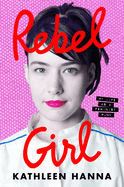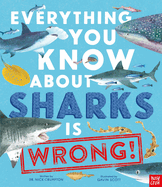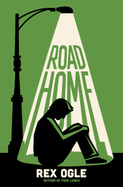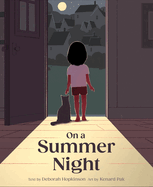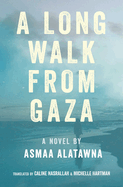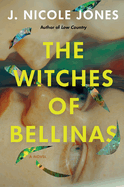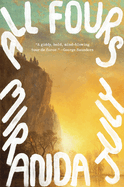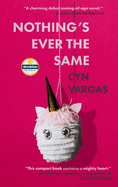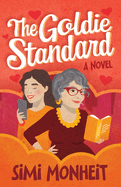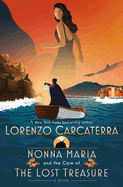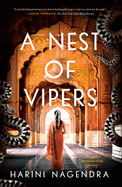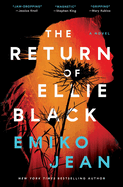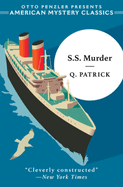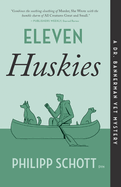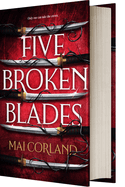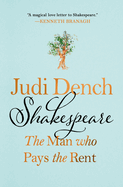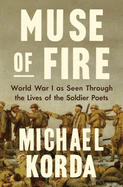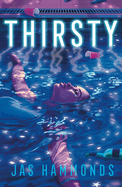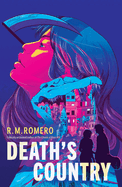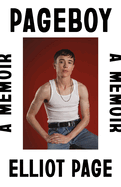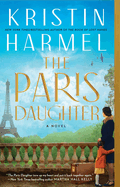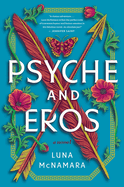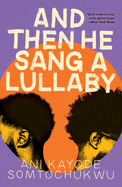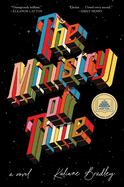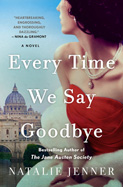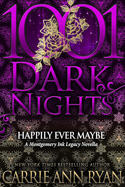Week of Friday, May 17, 2024
Several of the outstanding titles we review in this week's issue gaze upon the vast ocean waters and find that they are wild with intrigue and adventure. Death on the Beach: Essays from a Marginal World by Swedish author Per Högselius is an "evocative" collection of essays documenting the ways "[b]eaches are places of mystery and contradiction." And A Letter to the Luminous Deep by Sylvie Cathrall explores a "dreamy, witty epistolary underwater fantasy" about the mysterious disappearance of two lovers who were fascinated by the discovery of a new aquatic species. Plus, Everything You Know About Sharks Is Wrong! by zoologist Nick Crumpton and illustrator Gavin Scott is "a mesmerizing dive" through shark-infested waters in order to correct fallacies about "a highly misunderstood creature."
In The Writer's Life, punk icon Kathleen Hanna opens up about writing her memoir, Rebel Girl, which started out so long that she took to calling it Riot Grrrl Hobbit.
A Long Walk from Gaza
by Asmaa Alatawna, transl. by Caline Nasrallah and Michelle Hartman
Former Palestinian war reporter Asmaa Alatawna's searing debut novel, A Long Walk from Gaza, is an unblinking examination of a woman's coming-of-age in Gaza, and her onerous journey to find "somewhere new--quiet and safe--where [she] could just live." Significant parallels with Alatawna's own background--including sharing her name with her protagonist--suggest she draws heavily from her own life.
Asmaa's two-part story begins in Toulouse, where her lawyer is working to "legitimize and legalize [her] stay in France." Part One, "Leave," tracks Asmaa's perilous escape from "the giant hell of the open-air prison" that was Gaza to Spain and then France. Part Two, "Return," chronicles Asmaa's left-behind life as the fourth daughter in a Palestinian Bedouin family without sons, straining against gendered expectations, "regularly beat[en] into submission" by her parents, attacked by teachers, and bearing witness to fatal violence in her community. All the while, the relentless threat of kidnapping, rape, and murder by the Israeli occupation soldiers looms. In young adulthood, Virginia Woolf, Charlotte Brontë, and Louisa May Alcott save Asmaa's life: women writers "infuse[d] my soul with a spark of life that ignited my sense of freedom and lit my path."
Originally published in Arabic in 2019, Alatawna's unadorned prose and unrestrained narrative is empathically rendered by literary translators Caline Nasrallah and Michelle Hartman. Their ending note is especially wrenching: "We finished the translation... during the unfolding of a genocide in Gaza.... We watched the places mentioned in this book, the houses, businesses, schools, hospitals, and lives be bombarded and destroyed live on our phones." Unexpectedly, poignantly, Alatawna's intimate history becomes "a testament to a Gaza that will never be the same." --Terry Hong
The Witches of Bellinas
by J. Nicole Jones
J. Nicole Jones's The Witches of Bellinas sets a newlywed couple in a vibrant small community--a lovely wealthy commune, or a cult?--and watches the fallout, in an atmospheric, suspenseful experiment involving witchcraft, love, and dividing loyalties.
Tansy and Guy have been married mere months, although they've been together for a decade, when they move from New York City to the hamlet of Bellinas on the coast of northern California. Wealthy, health-oriented, idyllic, and highly exclusive, Bellinas is led by the charismatic Manny, or Father M to his followers, a business mogul turned self-styled guru, and his wife, Mia, a former model. Guy falls easily and head-over-heels into the lush, indulgent lifestyle: surfing, diving for abalone, carousing. Tansy, expected like all the wives to serve her husband's whims, finds Bellinas a bit suspicious. But the town's high shine, like its perfect weather, is hard to resist. She wants things to work out with Guy, so she goes along.
The Witches of Bellinas is narrated by Tansy in hindsight, from an apparent confinement in the town schoolhouse, after something has gone awry. Jones (Low Country) gives Tansy a strong sense of the wrongs done women at the hands of men, from both her experience and her scholarly work as a former academic. She writes, it seems, for her life.
At the intersection of the supernatural and simple human ugliness, The Witches of Bellinas gives its readers chills and thrills along with a profound sense of wrongs done, but no heroes or villains. This is a novel for anyone who's wondered if the picturesque might be too good to be true. --Julia Kastner, librarian and blogger at pagesofjulia
All Fours
by Miranda July
Whether it's directing films or performing in them, fashioning visual art, or writing, Miranda July (The First Bad Man) has demonstrated she's a multitalented creative. That talent manifests itself again in her second novel, All Fours, an unconventional but engaging story about one woman's attempt to navigate the sometimes perilous passage through the middle years.
Less than 30 minutes away from the home in Los Angeles where she lives with her husband and their seven-year-old ungendered child, July's highly self-aware 45-year-old unnamed narrator abandons her "vision quest-style journey" to New York City. Instead, she holes up in a "shabby, pale-yellow stucco motel" in the town of Monrovia, Calif., and gets her room professionally redecorated. It's in that lavishly appointed space over the course of the next two weeks that she engages in one of recent literature's more unusual affairs with Davey, a man nearly 15 years her junior, who works at a Hertz dealership and dreams of becoming a professional hip-hop dancer. For July's narrator, the emotionally charged moments that transpire in room 321 of the Excelsior trigger a profound re-examination of her life.
July's narrator is, by turns, intriguing and exasperating, but her forays into her past and a future she struggles to envision are never dull or predictable. With an often wry but consistently provocative approach, July relies on her complicated protagonist's insight to interrogate a variety of weighty themes, including female sexuality, creativity, and the sense many have as they cross the threshold of the mid-40s that a clock is ticking more insistently. For all those reasons, All Fours is a frequently surprising and refreshingly original story. --Harvey Freedenberg, freelance reviewer
Nothing's Ever the Same
by Cyn Vargas
Cyn Vargas's Nothing's Ever the Same is a starkly honest coming-of-age story told in the disarming voice of its 13-year-old protagonist. Simple but moving, this novella documents events that are traumatic but not unusual, thus marking the kinds of pain that are heartrending, as well as common, for a child approaching young adulthood. Itzel is clever and thoughtful, and her experience reflects universal elements of being a teenager: disappointment, betrayal, discovery, acceptance, and always, unavoidably, change.
"The first time I saw my mom cry was after my dad's heart attack," Itzel begins in the opening chapter. The heart attack comes during preparation for her 13th birthday party. Itzel's beloved father recovers from his heart attack, but something feels off. The family suffers one loss and then another. Itzel explores new feelings for her best friend. And then she sees something that will change the course of life for her entire family. What to do with her new knowledge? Who to blame? As the known routine is uprooted for Itzel and her parents, she has to navigate redefining relationships.
Vargas (On the Way) gives Itzel a straightforward storytelling voice, often naïve but also sharp-eyed. Her father, mother, Tia Amelia, and best friend Fred are characters sketched only briefly in Itzel's telling, but each has personality and redeeming qualities even when making mistakes. The author behind the narrator commands this story with a quiet compassion. Nothing's Ever the Same is a work of restraint and understatement, its young narrator capable of stoic relating of events as well as emotional reaction. The effect is deeply moving. --Julia Kastner, librarian and blogger at pagesofjulia
The Heirloom
by Jessie Rosen
A marvelous star-crossed caper that jets from Los Angeles to New York and across Europe, Jessie Rosen's The Heirloom is perfect for readers who can't resist a dash of globe-trotting drama in their romance novels.
Italian American Shea Anderson works in marketing for a film festival and lives in Los Angeles. Shea was raised under the influence of her beloved Nonna and inherited many of her grandmother's superstitions, including one advising brides against wearing heirloom jewelry lest any negative karma from the item's previous owner adversely impact their own marriage.
So when John, the man of Shea's dreams, presents her with a stunning heirloom engagement ring he bought at a quaint New York jewelry store, what should be the best moment of her life turns into a "personal proposal nightmare" for poor Shea. Determined to unearth the ring's history so that she can assuage her superstitious fears, she embarks on a whirlwind European adventure that takes her to Florence, Rome, Lisbon, and beyond in search of the ring's original owner.
The ring's provenance turns out to have more intriguing layers than Shea could have imagined. Adding to the adventure is Graham, a handsome journalist whose investigative skills turn out to be invaluable to Shea's search. But the longer she's away from John, the more confused she feels about her upcoming nuptials. It doesn't help that Graham is utterly charming, and they have a great deal in common. Meanwhile, the usually patient John isn't feeling so patient anymore.
The Heirloom is an impressive debut with a gorgeous, heartfelt ending. --Shahina Piyarali
The Goldie Standard
by Simi Monheit
Simi Monheit's sparkling debut novel, The Goldie Standard, follows a 21st-century Jewish grandmother's attempts to secure her granddaughter's happiness, with surprising results for both women.
Goldie Mandell, widowed and stuck in a New York City assisted-living facility, is determined to find a nice Jewish boy, preferably a doctor, for her granddaughter, Maxie, a doctoral student. But when Goldie schedules some appointments for herself (to secretly vet potential suitors), she hits a snag or two: for one, her body may be hiding a few secrets of its own. And for two, Maxie seems attracted to Goldie's driver, T-Jam Bin Naumann, an artist with an eclectic history. As Goldie juggles Maxie's love life, her daughters' overbearing attentions, and a budding romance with a fellow resident, she must examine long-held assumptions about what matters most.
Monheit's witty dual narrative highlights the generational gaps and the strong bond between grandmother and granddaughter. Goldie's daughters, Esti and Tamar, also have their say about everything from medical paperwork to fashion choices, resulting in a warmhearted cacophony of assertive Jewish voices. Maxie worries for Goldie's health as she struggles to move past her recent breakup and step fully into her adult life. Goldie frequently flashes back to her childhood in Germany, before she fled the Nazis, and to her long, loving marriage to her husband, Mordy. Though Goldie often wishes she could ask Mordy for advice, it's her own hard-won wisdom--plus a dose of reality from Maxie--that steers her through medical and personal challenges. The Goldie Standard is both a highly entertaining comedy and a deeper story about faith, complicated histories, identity, and love. --Katie Noah Gibson, blogger at Cakes, Tea and Dreams
Mystery & Thriller
Nonna Maria and the Case of the Lost Treasure
by Lorenzo Carcaterra
Lorenzo Carcaterra brings readers back to the sun-drenched Italian island of Ischia in his charming third Nonna Maria mystery, Nonna Maria and the Case of the Lost Treasure. The titular sleuth, a widow devoted to espresso, wine, and cooking elaborate meals for her family, helps her friends solve two mysteries that turn out to be intertwined. Carcaterra (Three Dreamers) pays tribute to his grandmother, the real-life Nonna Maria, through his fictional amateur detective's clever actions and delectable cooking.
Paolo Murino, a captain in the national Carabinieri police force, has found both love and solace on Ischia after moving there eight years earlier. But someone still has it out for him. Determined not to put Nonna Maria in danger, he warns her against getting involved, but Nonna Maria is equally determined that no one will harm her friend. At the same time, a local young woman named Rita comes to Nonna Maria with a hand-drawn map. Her recently deceased grandfather, Paolino, supposedly hid a priceless treasure in the island's network of caves, and Rita wants help in finding it.
Like life on the island, Carcaterra's plot moves at a leisurely pace, with occasional dramatic moments (like a fender bender and a fireworks display) and plenty of delicious meals, most cooked by Nonna Maria. Nonna Maria, with her ever-present black tote bag, dispenses wisdom and wine to her friends, and though the dramatic tension escalates, readers can predict correctly that the narrative will end with a celebratory feast. With wry humor and a vividly realized setting, Nonna Maria's third adventure feels both cinematic and cozy--a treat for mystery lovers and Italophiles. --Katie Noah Gibson, blogger at Cakes, Tea and Dreams
A Nest of Vipers: A Bangalore Detectives Club Mystery
by Harini Nagendra
A Nest of Vipers, Harini Nagendra's twisty third mystery featuring amateur sleuth and mathematician Kaveri Murthy, plunges into Indian politics in the 1920s as Kaveri is drawn into a web of conspiracies while searching for a young man's missing father.
As Great Britain's Prince Edward prepares to visit Bangalore in early 1922, Kaveri and her doctor husband, Ramu, stumble onto a mystery at the circus: a magician known as Das goes missing after his performance. His son, Suman, enlists Kaveri's help in finding his father, but both men are hiding multiple secrets. As Kaveri investigates, she uncovers connections to a local ring of thieves, the growing Indian independence movement, and her friend Anandi's unsavory husband. With the help of Ramu and her female friends in the Bangalore Detectives Club, Kaveri must solve the mystery before the prince arrives and Bangalore's citizens are put in danger.
Nagendra (The Bangalore Detectives Club, Murder Under a Red Moon) expertly weaves together Indian politics (as when Kaveri attends a secret meeting of the independence movement) with concerns of daily life. Sharp-eyed, tenacious Kaveri crisscrosses Bangalore in search of answers regarding Das's disappearance, the recent spate of burglaries of wealthy homes, and the rumblings of possible danger. Kaveri's friends hold a range of views regarding India's occupation by the British, but all of them work together to counter threats to their city. Kaveri solves the mystery in satisfying fashion, with some wry commentary by several characters on the limitations of the British Empire, and--of course--a few mouthwatering snacks when the job is complete. --Katie Noah Gibson, blogger at Cakes, Tea and Dreams
The Return of Ellie Black
by Emiko Jean
The vulnerability of teenage girls is the pulsebeat of Emiko Jean's The Return of Ellie Black, a crafty thriller in which not just misogyny but classism play villainous roles.
Ellie Black has been missing since she was 17. Two years later, the Coldwell, Wash., girl is found in the Capitol State Forest, two hours from where she was abducted. Coldwell police detective Chelsey Calhoun is working the case, but she can get only so much out of Ellie: something about waking up in darkness after her kidnapping, something about a man with a red bandana on his face. A doctor has confirmed that Ellie was abused in captivity, making the girl's reluctance to relive what happened understandable, and yet Chelsey begins to suspect that Ellie's reticence is obfuscation; "What are you hiding?" she finds herself wondering. She's also aware that the ferocity of her interest in justice for Ellie reflects her own story: Chelsey's older sister died gruesomely when Chelsey was 14.
While Chelsey's perspective dominates the novel, Jean (Mika in Real Life) has collaged it with the viewpoints of other characters--Ellie's working-class parents, her boyfriend, and so on--to present an intimate small-town portrait. Ellie, too, takes the point-of-view reins; in interspersed chapters, she replays what happened to her, eventually revealing how she escaped her captors. As for the other question driving The Return of Ellie Black: Who held her captive? Even readers who don't totally buy the book's answer will probably agree that it's the right one. --Nell Beram, author and freelance writer
One of Us Knows
by Alyssa Cole
Alyssa Cole (When No One Is Watching, How to Catch a Queen) plumbs the darkest expanse of depravity in One of Us Knows, with a look at racism and the treatment of marginalized people. Her unpredictable plot combines a locked-room mystery with a gothic tale about a woman with dissociative identity disorder. One of Us Knows revolves around Kenetria "Ken" Nash, who created a safe place for her seven "headmates," or multiple personalities, in a castle-like inner world.
Ken doesn't know that she has been dormant for six years following an incident, or that her headmates have been managing her life. She wakes up on a dock, waiting for a boat to take her to an abandoned Hudson River island, where she will be the caretaker of a crumbling estate, "a defiant treasure." Ken has no knowledge that a headmate applied for the job, but she hopes to make a "deep dive" into the estate. Before her career stalled, she was enrolled in a historical preservation graduate program and had planned to concentrate on Black historical sites such as this one. Ken and her headmates expect that the surly groundskeeper, Celeste, will be the island's only other resident. Then Ken's entitled ex-boyfriend arrives, followed by his racist, misogynistic father and other members of the island's trustees. Events take on an even more sinister turn, but an approaching storm traps everyone on the island, making it impossible for Ken to escape from danger.
Cole keeps the chilling action churning as One of Us Knows illustrates the daily challenges Ken faces in communicating with her headmates. The island's unsavory past, tension between Ken and the trustees, and the estate's warren of rooms add new depths of terror, intensified by the trustees' bigotry. --Oline H. Cogdill, freelance reviewer
S.S. Murder
by Q. Patrick
Before there was Death on the Nile, there was murder on the Atlantic. Originally published in 1933, S.S. Murder by Q. Patrick--something of a catchall pseudonym for, in this case, Richard Wilson Webb and Mary Louise White--is a seafoam-sparkling epistolary shipboard murder mystery with a literal boatload of suspects.
New York journalist Mary Llewellyn is on board the Rio de Janeiro-bound S.S. Moderna, convalescing from a recent appendectomy. What starts as some time-killing journal writing, with entries addressed to her fiancé back in New York, becomes Mary's record of the sinister goings-on aboard the ship. The drama begins with the fatal poisoning of wealthy businessman Alfred Lambert during an alcohol-soaked game of bridge at which Mary is in attendance. So much for her "rest cure." Always hungry for a scoop, she's thrilled to be back on the beat.
With S.S. Murder, the American Mystery Classics series has exhumed another lost treasure from detective fiction's golden age. The puzzle's smart resolution caps off the book's superb premise: a ship at sea is a natural locked-room mystery setting, and the journal-writing conceit allows for Mary's jotted-down diagrams showing, significantly, where various suspects were positioned when Lambert fell dead. Another perk: while Mary may be pining for her fiancé, she has the funny-strident voice of the female lead in a screwball comedy of the novel's vintage. At one point she harrumphs, "Some men haven't got enough gumption to like a sensible sort of woman, even if she isn't any lingerie ad." --Nell Beram, author and freelance writer
Eleven Huskies: A Dr. Bannerman Vet Mystery
by Philipp Schott
Eleven Huskies, Philipp Schott's twisty, thoughtful third mystery featuring veterinarian Peter Bannerman, follows the amateur sleuth (and Peter's dog, Pippin) on a case in the Canadian wilderness that quickly becomes more complicated than it initially seems.
Days before a planned canoeing trip, Peter is called to a wilderness lodge in northern Manitoba to examine a team of huskies showing symptoms of poisoning. John Reynolds, who owns the dogs and the lodge, appears distressed, so Peter isn't sure whether to suspect John himself or someone else who may have it out for him. The same day, three people are killed when someone shoots down a small plane over a nearby lake. Though his primary professional concern is the dogs, Peter can't help but wonder if the cases are related. He returns to the lodge with his wife, Laura, for the canoeing trip, and their interactions with lodge staff and fellow guests send Peter's brain spinning to find a solution to the case.
Schott (The Accidental Veterinarian; Six Ostriches) has created an engaging protagonist in Peter, who is autistic and has worked to counterbalance his own literal thinking and blend in socially. Peter's talented sniffer dog, Pippin, proves a great help when a wildfire spreads through the area near the lodge, and Laura and her brother, Kevin, an officer in the Royal Canadian Mounted Police, also assist in solving the case. Animal lovers and mystery fans will enjoy Schott's narrative, which meanders through its stunning backcountry setting at just the right pace. --Katie Noah Gibson, blogger at Cakes, Tea and Dreams
Science Fiction & Fantasy
A Letter to the Luminous Deep
by Sylvie Cathrall
Two bereaved strangers work to unravel the mystery of their siblings' disappearance in Sylvie Cathrall's dreamy, witty epistolary underwater fantasy, A Letter to the Luminous Deep, the first book in a planned duology.
E. Cidnosin is fascinated with the previously undiscovered "Elongated Fish" she spots through the window of the Deep House, her underwater home, so she writes to Henerey Clel, a natural history scholar and complete stranger. Her social anxiety leads her to exhort him not to read her letter but to "crumple it into an abstract shape that might look quite at home on a coral reef." He does not, and the pair fall in love over a series of letters. One year later, E.'s sister, Sophy, writes to Henerey's brother, Vyerin, to ask for help unraveling E. and Henerey's tragic disappearance in an explosion that destroyed the Deep House. Sophy and Vyerin swap the papers their siblings left behind and uncover a mystery involving a lost society, unexplained underwater melodies, and a glass object dubbed "the Structure" that inexplicably appeared in the Deep House's garden.
Cathrall's characters speak with a whimsical Victorian-esque wryness that allows for sly one-liners, effusive descriptions of sea creatures, and deep, understated passion. Her world-building combines an island-dwelling culture, whispers of ancient technology, and deep-sea exploration in the name of academia to create a soft and satisfying blend of science fiction and fantasy, perfect for fans of T.J. Klune's In the Lives of Puppets. This love letter to sibling bonds and uncharted depths will beguile readers. --Jaclyn Fulwood, blogger at Infinite Reads
Five Broken Blades
by Mai Corland
A band of killers unites to destroy a god king in Mai Corland's breathtakingly high-action romantic fantasy Five Broken Blades.
Euyn, the former crown prince of Yusan, is mistrustful when his lover-turned-betrayer, Mikail, finds him in hiding. Mikail works as spymaster to King Joon, the elder brother who ordered Euyn to be left for dead. Mikail has come to Euyn with a proposition: kill the god king Joon and take control of Yusan. The king is not just heavily guarded but also wears a crown that renders its owner immortal, so a frontal assault would be a fool's errand. However, Mikail has two aces up his sleeve in Aeri, an adorably quirky master thief, and Sora, an indentured servant raised as an expert seductress and poisoner. Joining them are Aeri's gruff bodyguard, Royo, and nobleman Tiyung, who pines for Sora and is also the son of the man who owns her indenture. To seize the crown, the would-be murderers will have to trust one another, no mean feat when there may be a traitor in their midst.
The party journeys across a vast Korean-inspired fantasy landscape beset with mythical beasts and populated by scheming nobles and suffering peasants. Corland, who has also published middle-grade and YA fiction as Meredith Ireland, explores the chemistry in multiple romantic pairings, and builds a dense network of friendships, alliances, and love. This triple-romance wrapped in a heist and rolled up into an epic fantasy will grab romantasy and fantasy fans alike, and its daring cliffhanger ending will leave its readers breathlessly awaiting the sequel. --Jaclyn Fulwood, blogger at Infinite Reads
Biography & Memoir
Rebel Girl: My Life as a Feminist Punk
by Kathleen Hanna
Kathleen Hanna has led such a high-octane life that her memoir wouldn't need to be especially well written to hold reader interest. As it happens, Rebel Girl: My Life as a Feminist Punk delivers on both the sentence and the story fronts.
Born in 1968, Hanna grew up "at the lower end of middle class," bouncing between suburbs in Oregon and Maryland. Her father's alcoholism blighted a childhood redeemed by Hanna's youthful epiphany: "I had something to live for. I was a good singer." Despite a minefield of challenges, including being the victim of sexual violence, Hanna got into and graduated from Washington's Evergreen State College. In Olympia, she played in a couple of punk bands before becoming "indie famous" fronting Bikini Kill, in which she finally had bandmates who didn't consider "my 'domestic violence/feminist stuff' annoying"; meanwhile, she was a force behind the feminist-punk Riot Grrrl movement. In 1998, Hanna quit Bikini Kill, tired of the fishbowl life, male violence at gigs, and hostility from women who felt she wasn't leading the feminist charge perfectly. Rebel Girl takes readers up to the present, which, following a debilitating stretch with Lyme disease, finds Hanna in a good place.
The book's hundred-odd chapters, many with punch-line-like endings, conjure Bikini Kill songs: they come on like a storm and are over before people know what hit them. Rebel Girl is the kind of book that leaves readers, like concertgoers after watching their favorite band play its last song, wishing it wasn't over. --Nell Beram, author and freelance writer
Drive: Scraping by in Uber's America, One Ride at a Time
by Jonathan Rigsby
Possessed of a master's degree in Middle Eastern studies and performing at an exemplary level in his job as a counter-terrorism intelligence analyst for the State of Florida, Jonathan Rigsby in 2016 was successful by any reasonable definition of that term. But in the dark year when his marriage broke up and he desperately needed to supplement his income to hold up his end of the divorce settlement, he signed on as an Uber driver in his home town of Tallahassee, Fla. Drive: Scraping by in Uber's America, One Ride at a Time is the grimly frank account of his experiences.
Rigsby quickly stepped onto a 70-hour-a-week hamster wheel that left him sleep-deprived and miserable as he struggled to pocket the extra $250 per week he estimated he would need to earn to avoid financial ruin. He recounts the psychological pressures he endured, facing a choice between washing clothes and buying food while wrestling with the thought that he was failing his young son, and he shares vivid stories of his riders.
Drive concludes with a biting epilogue in which Rigsby dissects the business model of Uber and other well-known companies that exploit the labor of gig workers like him. The structure handsomely rewards wealthy venture capitalists and startup entrepreneurs, while treating its essential laborers as disposable commodities. As Rigsby explains, Uber's low cost and undeniable convenience extract a considerable price, not only from the workers who keep its wheels turning, but also from the society willing to ignore their plight. After reading this book, some may find themselves pausing before they tap into their smartphone's app. --Harvey Freedenberg, freelance reviewer
Shakespeare: The Man Who Pays the Rent
by Judi Dench and Brendan O'Hea
There's probably no person living who is more qualified to talk about performing Shakespeare or who is more entertaining while doing so than Dame Judi Dench. Shakespeare: The Man Who Pays the Rent will be read religiously by all actors, and raptly by anyone who enjoys the theater, the craft of acting, or simply the work of Shakespeare himself. The book is written in the form of an extended conversation between Dame Judi and her friend Brendan O'Hea, an actor and director who has staged many plays at Shakespeare's Globe Theater.
Dame Judi's ruminations are wide-ranging. She offers illuminating insights into the texts themselves and the staging of the plays in venues storied and modest throughout the world, and delightfully candid insider gossip from her more than half century of performing with some of the most talented actors of the day.
"All I ever wanted to do was play Shakespeare, nothing else," Dame Judi says, and it's clear from her stories that she's loved almost every minute of it, though some plays are closer to her heart than others. When O'Hea asks if there are any plays she hates, she recounts the story of one director scolding the cast by saying, "If I hear this play being called The Merchant of [vomit sound] again I shall be very angry."
The book covers every Shakespearean role that Dame Judi has performed, from Ophelia in Hamlet in 1957 to Paulina in The Winter's Tale in 2015, and it still leaves readers wanting more. --Elizabeth DeNoma, executive editor, DeNoma Literary Services, Seattle, Wash.
Did I Ever Tell You?
by Genevieve Kingston
In Did I Ever Tell You?, a deeply affecting memoir of her mother's legacy of love, debut author and playwright Genevieve Kingston writes of growing up nurtured by the messages her mother left for her children to open on significant occasions throughout their lives.
Kingston's mother, Kristina Mailliard, died in 2001, nearly nine years after her cancer diagnosis and days before Kingston's 12th birthday. Kingston recalls resentfully watching her mother craft the collection of boxes and cards, their existence symbolizing "so many years stretching ahead without her." At every birthday through her 30th, and at graduations and other milestones, Kingston savored the mementos her mother so carefully wrapped: her mother's birthstone ring, a string of pearls, a keychain to commemorate getting her driver's license. Her mother also included notes about the objects and words of love and advice, such as "Love is stronger than death. I will always be part of you" and "wear your seatbelt and drive with caution."
Kingston includes candid stories of the joys and sorrows she shared with her sometimes challenging father, her devoted older brother, and a group of supportive, lifelong friends. As she grew older, she sought insight into her mother. She learned that Mailliard had anticipated this, too, and encouraged acquaintances to welcome her daughter's questions. A heartfelt memoir of navigating life in the wake of loss and a poignant homage to a mother and the love she left behind, Did I Ever Tell You? is unforgettable. --Cheryl McKeon, Book House of Stuyvesant Plaza, Albany, N.Y.
History
Muse of Fire: World War I as Seen Through the Lives of the Soldier Poets
by Michael Korda
From patriotism to pathos, historian Michael Korda (With Wings Like Eagles) movingly illuminates how the "soldier poets" of World War I experienced their generation's "war to end all wars." Korda explores "how the initial enthusiasm for the war gradually gave way to embittered resignation" for most of the six poets living at "the tail end of the Victorian and Edwardian age": Rupert Brooke, Alan Seeger, Isaac Rosenberg, Robert Graves, Siegfried Sassoon, and Wilfred Owen. Korda begins his free-flowing narrative of their lives with an extended rumination on Brooke, who, at the war's outset, "embodied the national spirit perfectly." His poem "The Soldier," famous throughout the English-speaking world, declares "If I should die, think only this of me:/ That there's some corner of a foreign field/ That is for ever England." After Brooke's death and subsequent obituary by Winston Churchill in the Times, he became a "recruiting symbol" for the British army.
Korda's inclusion of two lesser-known soldier poets, Seeger and Rosenberg, adds depth and dimension to a cast otherwise composed of junior officers and members of the British upper class. Seeger, an American, joined the French Foreign Legion and, like Brooke, was devoted to the war's purpose until his death at the Battle of the Somme in 1916. Rosenberg joined the war out of necessity and "hated it all." He never rose above the rank of private and his poetry was "expunged of patriotism" as it catalogued the war's horrors from an ordinary soldier's perspective. An innovative blend of biography and literary insight, Muse of Fire is a welcome addition to the World War I history canon. --Peggy Kurkowski, book reviewer and copywriter in Denver
Essays & Criticism
Death on the Beach: Essays from a Marginal World
by Per Högselius, transl. by Agnes Broomé
"Beaches are places of mystery and contradiction," writes Per Högselius, a Swedish professor of technology and the history of science, in Death on the Beach: Essays from a Marginal World, translated by Agnes Broomé. In 15 fascinating, expansive essays that encompass wars, religions, crime novels, murders, poets, and much more, he proves his point that "the seashore is a borderland," a place that once "evoked fear and repulsion." His examples are often visually evocative. For instance, before the mid-18th century, the unfortunate Europeans who had to live by the shore faced their windows away from the sea, as it was seen as an area of death and putrefaction, where "Creation itself was incomplete."
The collection is a treasure of assemblage. Högselius deftly unites travelogue, memoir, and contemporary culture with historical facts and stories to tremendous effect. "In the Tidal Zone," for example, begins by summarizing the 2009 movie Marea de arena (Tides of Sand), from the Mexican director Gustavo Montiel Pagés. From there, Högselius discusses a cliffside hike he took in Germany with a friend from England; the historical fear of tides experienced by many Britons; accounts of quicksand in England, France, and in literature, such as in Victor Hugo's Les Misérables; then returns at last to the aforementioned film.
While many of the essays are Eurocentric, some touch on the Middle East, Africa, Central America, and the U.S. Asia is mostly absent, except for Thailand, as featured in the ubiquitous novel and movie The Beach. Regardless of location, Högselius's curious and nimble mind leads readers down a captivating path. --Nina Semczuk, writer, editor, and illustrator
Children's & Young Adult
Everything You Know About Sharks Is Wrong!
by Nick Crumpton, illus. by Gavin Scott
Zoologist Nick Crumpton and illustrator Gavin Scott follow their Everything You Know About Dinosaurs Is Wrong!--the first installment in the Everything You Know About series--with a mesmerizing dive into the world of the oft-maligned shark. Crumpton structures the work around common myths about the shark and its close relatives, the ray and the skate. Scott supports the fascinating text with naturalistic art that faithfully re-creates the animals described. The result is a spellbinding picture book for middle-grade readers that corrects the record on a highly misunderstood creature.
Sharks have existed for millions of years, and there are several fallacies associated with them: these vicious killers (actually, they kill fewer people than cows) serve no purpose (except being "one of THE most important animals in the world's oceans") and are stupid (even though some species exhibit curiosity, and others contemplate future events). As Crumpton dispels myth after myth, he highlights multiple species of shark and illuminates amazing characteristics, like the sharks that can clone themselves through parthenogenesis: "When some female sharks can't find a mate but choose to have a baby, they grow one using only their own DNA."
Scott's realistic illustrations dazzle with their intense detail, showing texture and the distinctive characteristics of each species, such as long snouts and large crests. Every page features sharks up close as well as in their natural habitats, adding to the overall awe of this reading experience. Shark lovers, future marine biologists, and anyone who thinks they know everything about sharks should find Everything You Know About Sharks Is Wrong! engaging, entertaining, and enlightening. --Jen Forbus, freelancer
Road Home
by Rex Ogle
In Road Home, the heart-wrenching final book in his memoir trilogy that began with Free Lunch, Rex Ogle details the turbulent summer of 1998 after high school when he came out as gay and was forced out of the house by his father.
"I never thought I would have so little," Ogle writes of his 17-year-old self, "Not when I need so much." The young man, with nowhere else to go, packs a duffle bag and drives from Alabama to New Orleans to stay with an older man whom he met during a vacation. Their short, tumultuous relationship leads to domestic violence, and Ogle flees and lives on the streets. When he becomes unhoused, Ogle calls his religious abuela for help, but she doesn't answer. "I can't bring myself to leave a message. What would I even say? 'I'm gay. I'm homeless. I'm scared.' "
Detailed dialogue and short, punchy sentences are captivating and effortlessly convey Ogle's bleak experience. Throughout, Ogle vividly recounts his desperation and bouts with suicidal ideation while also highlighting shreds of hope, such as reminders of his childhood. For example, one evening, after obtaining enough money from panhandling to afford a McDonald's Happy Meal, Ogle delights in finding a red plastic dragon. The small toy goes on to serve as a companion and good luck charm during some of his darkest moments. Ogle eventually bravely reaches out to a family member and is given the opportunity to begin rebuilding his life--ultimately, Road Home is a story of queer survival and reclamation of self. --Kieran Slattery, freelance reviewer, teacher, co-creator of Gender Inclusive Classrooms
On a Summer Night
by Deborah Hopkinson, illus. by Kenard Pak
In the beguiling On a Summer Night, Deborah Hopkinson (Carter Reads the Newspaper) and Kenard Pak (On the Horizon illustrator) eloquently showcase the hushed, magical wonder of a hot summer night.
A child wakes on a night so warm that "even the crickets think it's too hot to sing." The child walks through the house and explores the yard in moonlit shadows. Hopkins sets the story in present tense, with a second-person voice asking: "What has woken you?" As the child explores inside and outside the home, the world comes alive. The cat sleeping on the table wakes and follows the protagonist, the dog across the street starts barking, and one cloud sways in the sky. Separately, the child and cat take in the wonder of it all: "You breathe in the night, slow and quiet." When all settles, the child lifts the cat and heads back to bed.
Hopkinson builds a cumulative tale with a series of questions about who wakes each thing: Who woke the cat? "Was it you?" This is followed by the introduction of the dog: "Who has woken him? Was it the cat? Was it you?" The story, tantalizingly, provides no answers. Hopkinson's text is evocative. She fills the book with bustling verbs, descriptive phrasing, vivid figurative language, and pleasing alliteration. Pak uses shadowy shades of plum, pine green, and slate to illustrate the brown-skinned child in a neighborhood by a body of water. Intentionally off-kilter compositions, as well as interstitial spreads with a moving band of growing light, accentuate the mystery of the night and its quiet surprises. --Julie Danielson, reviewer and copyeditor
Thirsty: A Novel
by Jas Hammonds
Jas Hammonds, winner of the 2023 Coretta Scott King John Steptoe New Talent Award for We Deserve Monuments, delivers another exceptional work of YA contemporary fiction in their scintillating sophomore title, Thirsty, about a young woman desperate to be seen and valued.
Eighteen-year-old Blake, girlfriend Ella, and friend Annetta are spending the summer pledging the Serena Society, which is, as Annetta puts it, "a club for powerful, badass women of color." Entrance seems a foregone conclusion for Ella and Annetta, whose mothers are Serena alumnae. Blake, though, isn't as sure about her own acceptance; she's the daughter of a Black pilot and a white night-shift 7-Eleven employee and the first in her family to go to college. So, if the partying of the Serena girls is as "next level" as Blake has heard, she will lean into her "wild" reputation to impress. Although Blake gets sloppier with every party, she keeps drinking.
Hammonds depicts alcoholism with spectacular accuracy, including the heady, dizzying, warm rush of the first few drinks. In the beginning, drinking gives Blake "That Feeling": "swollen lips, invincibility, sexiness, power." As she gets drunk, though, her thoughts become disjointed, the writing staccato. While the conclusion feels a bit long on the romantic story and short on the recovery, Thirsty is accessible, energetic, and never over-burdened by the heft of the issues Hammonds deftly covers. Hammonds crafts with care, giving time and space to the many facets of Blake's identity while highlighting a kind of addiction story that is rarely told. Thirsty is as effervescent as it is weighty. --Siân Gaetano, children's and YA editor, Shelf Awareness
Death's Country
by R.M. Romero
Death's Country by R.M. Romero (A Warning About Swans) is a splendidly rhapsodic novel-in-verse retelling of Orpheus and Eurydice that tenderly portrays polyamorous queer love and the expansive emotions behind embracing a complex self.
Sixteen-year-old Andres Santos is "a snarl/ of thorns playacting/ at being a boy," a tempest of "pointless fury" sustained by his Cuban mami and Brazilian papi's volatile relationship. Then, he meets Liora and Renee. The three soon form a romantic bond that serves as Andres's "sanctuary." After an accident lands Liora in a coma, Renee and Andres travel to the underworld to retrieve her soul. But, unbeknownst to Renee, Andres has already been here. Months ago, Andres drowned and bargained for his life with Death herself. Death agreed to cleave away Andres's shadow--his anger--in exchange for something he loves. Now, Andres fears Liora is that something. Andres, however, isn't the only one with secret wounds.
Romero's transportive prose, via Andres's soulful first-person narration, conjures a land of "broken animals," the "phantom perfume" of "crumbling flowers," the envy of stuck "film-strip souls" desperate to forget regrets, and predatory "vulture men" with "sickle-edged" smiles. The story bursts with the beauty of romantic love ("my first kiss with Liora/ became the third bar of our trio's anthem") and stresses that "any rule that limits love/ doesn't make sense... We're a circle, not a series of strings/ about to knot and break." Romero sleekly references literature (The Divine Comedy) and music (Bowie, Cobain, the Beatles) between gorgeous turns of phrase (kisses "soft/ as sea-foam"; "ballad blue" Miami nights; a highway as the city's "electrified spine"). A melodic marvel. --Samantha Zaboski, freelance editor and reviewer
Now in Paperback
The Writer's Life
Kathleen Hanna: Writing as a Way of Saying 'I See You'
 |
|
| Kathleen Hanna (photo: Jason Frank Rothenberg) |
|
Kathleen Hanna first made her mark fronting the Olympia, Wash.-based punk band Bikini Kill in the 1990s. She was also a force behind the feminist-punk Riot Grrrl movement and went on to front the band Le Tigre and pursue other projects. Hanna lives in Los Angeles with her husband, musician Adam Horovitz, and their son. Rebel Girl: My Life as a Feminist Punk (Ecco, $19.99, reviewed in this issue) is her first book.
Rebel Girl has an incredibly authentic voice. How did you go about writing it? Did you just bang it out on a laptop, or did you record it and take it from there?
I tried the recording thing and it totally did not work for me. So, yeah, it was pretty much just butt-in-chair the whole way. I just sat down and would start writing. And I was super lucky: I didn't have that problem that people talk about of, like, the blank page.
It was the opposite?
Yeah. It was the opposite. The really bad thing was, I am not a writer by trade, and so I started writing it in... TextEdit, or Pages? And I thought the book was only 300 pages--[my editors] were like, "It should be around 300 pages, and then we'll edit it"--so I wrote what I thought was 300 pages. But when we put it into a Word doc, it was 600 pages.
Oh my god.
So I keep calling it Riot Grrrl Hobbit. I was like, "Oh no! I wrote Riot Grrrl Hobbit! What do I do?"
What did you do?
So my friend Ada Calhoun, who is an amazing writer--she wrote the book Also a Poet--
I reviewed it, actually.
Oh wow! She's a really good friend. She interviewed me for something 20 years ago: I was doing this art show that I put on, and she came to interview me. Usually there has to be some sort of professional thing where you don't hang out in real life, you just do the interview and then it's over. But I was really taken with her. And I was like, "Hey, do you want to be on my softball team?" I felt like I was asking her out on some weird date. And she was like, "I love softball!"
Softball is important.
It is! We still have a softball team. So, yeah, she started playing softball, and we've been friends ever since. And originally we were going to write the book together, many, many years ago, but I realized I wasn't ready. And then she's in New York and I'm in L.A., and so I just wrote it myself. But when I had the problem of, "Uh-oh: this is 600 pages," I called Ada. I paid her--it wasn't just, like, "Do this as a friend," because it was a lot of work. She came out and hung out with me for two weeks at my house, and we had the best time. It would have been a nightmare doing it by myself. She read it and was just like, "Oh, here's where we're cutting, here's where we're cutting." And I totally trusted her. She's like, "Do we need to talk about every single cut?" And I was like, "Uh, that's a waste of time. Why don't you just cut it?"
Did you favor cutting from the end or the beginning? Or was it kind of just dribs and drabs here and there, and eventually you had 300 pages?
It was all throughout. I don't know if you've seen that show The Queen's Gambit, where the woman plays chess?
Uh-uh.
She has this thing where she lies in bed and she looks at the ceiling and she sees chess moves. And Ada was like that. She would sit on the couch and look at the ceiling, and I could see her just moving chapters.
In Rebel Girl, you're constantly reading, whether it's Kathy Acker or Andrea Dworkin. What are you reading now, and is there something you're reading that might surprise people?
I don't know if it would be that surprising. My friend James Spooner and his literary partner, Chris Terry, edited this book Black Punk Now that I'm loving. It's tons of different writers and musicians who are writing about their experiences in the punk scene. I was really inspired by Viv Albertine's Clothes, Clothes, Clothes. Music, Music, Music. Boys, Boys, Boys, and then her book after that, which was even better. [Editor's note: The book is To Throw Away Unopened.] I guess the surprising memoir that I read that really influenced me but has nothing to do with my memoir at all is Alan Cumming's memoir. [Editor's note: The book is Not My Father's Son.]
If you were going to write another book, what do you imagine it would be about?
Actually, I've thought about it, and I definitely think one part would be me writing about me now, on tour and playing shows. I'm in a new band, and I'm writing an album with them, and I've never written about making music while I'm making music, and performing while I'm performing. So I thought it would be really interesting to keep a diary about that. I'm a morning pages person, so I just write whatever: "I dreamt about this," or, you know, "Here's some stuff I have to do." I don't write at the end of the day, like, "Here's what happened yesterday." So, yeah. I would love to write about what my life is like now, and then see what the other story would be. I'm really interested in, what would be the contrasting story? Would it be going back to things that I left out of the first book?
Well, if you wrote another book, I would definitely read it.
I'm so happy I wrote [Rebel Girl], but it was really the worst possible thing. [Laughs]
You found it really difficult?
Yeah, I did. I remembered a lot of stuff that I didn't really want to remember, and I think I went back to some really painful things. One of the things was the '90s just in general.... I got to this point where not talking about how desperately unhappy I was for most of the '90s was making me feel really invisible. The story about me in the '90s was that I was in this band and everybody loved us and we changed everything, and how great blah blah blah, and I wore cute dresses onstage, and... you know what I mean? The thing that I was hearing back about myself from young people was, "Oh, I wish I was born in the '90s." I was like, "Oh, no you don't." Every night was a struggle. And it's really hard to do 12 jobs. You're driving the van. You're booking the shows. You're dealing with the promoter. You're dealing with getting paid. It was just too much. And then, on top of it, the feminist thing, so that we would show up places, and typically the guys who ran the space would treat us horribly. And they would just have all these stereotypes of, like, they would think we hate them, so they would immediately be really mean and rude to us.... But I did write [Rebel Girl] in mind of younger musicians, because I know they're still grappling with some of the same things. To be, like, "I see you." --Nell Beram
Book Candy
Book Candy
Mental Floss asks, "Quiz: Can You Guess the Book Based on Its Original Title?"
---
On Crime Reads, Kate White shares "13 Weird, Fascinating Things I've Learned Researching Crime Novels."
---
Goethe's Theory of Colors: The 1810 treatise that inspired Kandinsky & early abstract painting." (via Open Culture)
The Ministry of Time
by Kaliane Bradley
A disillusioned civil servant signs on to a secret time travel project in Kaliane Bradley's inventive debut, The Ministry of Time. In near-future England, the government has discovered technology to bring people forward through time and has collected five Brits from previous centuries. The unnamed protagonist is hired as a "bridge," someone who will live and work with one of these "expats" from history. She is assigned to Commander Graham Gore of the Royal Navy, a sailor and polar explorer transported just before his death during the doomed 1845 Franklin expedition to discover the Northwest Passage through the Arctic.
Bradley deftly blends science fiction, romance and thriller, creating an immersive world and plot that cry out for film adaptation. Readers are so swept up by the workplace and culture-clash humor that the moral quandaries and behind-the-scenes scheming form a background hum only noticeable when the protagonist is forced to acknowledge them. As the bridges spend time with their charges, and the expats learn to live in their new world, the narrator and Gore's initial attraction bumps and jostles its way toward a romance. Stuffy Victorian Gore is simply not equipped to court a modern woman, and the narrator is determined not to be courted. The pair spend nearly every hour together, however, creating a situation replete with sexual tension even as they engage in the most mundane of activities: "He was an anachronism, a puzzle, a piss-take, a problem, but he was, above all things, a charming man. In every century, they make themselves at home."
Bradley's expertly drawn characters are both entertaining and intriguing. Referred to as Nineteen-sixteen, Arthur Reginald-Smyth is a young gay or bisexual man taken from the front lines of the Battle of the Somme in World War I. Margaret ("Maggie") Kemble--Sixteen-sixty-five--is a lesbian who was locked in a room alone to die of bubonic plague during the Great Plague of London. Odious Lieutenant Thomas Cardingham--Sixteen-forty-five--was taken from the Battle of Naseby during the First English Civil War. Anne Spencer was saved from beheading during the 1793 French Revolution. And 38-year-old Graham Gore, also known as Eighteen-forty-seven, is a fictionalized version of the real Commander Gore, who died with the rest of the men during the Franklin expedition. Arthur's sweetness and pining for Graham endear him to readers, while Maggie's exuberance and foul mouth are equally compelling. They quite often steal scenes from Graham--a feat, considering the man's appeal.
Between chapters, Bradley shares Gore's story: a haunting narrative of seafaring adventure and camaraderie turned frozen nightmare. These interstitials remind readers that the main story isn't the entire picture, that each individual inhabits their own reality inside the collective experience. "Nineteen-sixteen was as incomprehensible to Sixteen-forty-five as I was," the narrator says. "Everyone was paddling in their own era-locked pool of loneliness." Bradley's complicated narrator is sometimes difficult to root for, though she never quite fits the label of anti-heroine. She grapples with depression and PTSD, but considers both to be a personal failing. Her upbringing as the daughter of a survivor of the Khmer Rouge shapes her outlook, whether she acknowledges it or not. Her refusal to process her own trauma meaningfully at times inhibits her ability to empathize with the expats; her journey from disaffected government cog to slightly more empathetic friend and partner is slow but satisfying.
Nothing about secret government-managed time travel is simple, however, and soon the protagonists encounter problems of both the ethical and gun-wielding varieties. Some months into the project, the narrator is abruptly cut off from her supervisor. The unanswered questions and suspicious happenings continue to mount and soon she, Gore, and the other expats are caught in a battle not just for their lives, but also the future. England is wracked by powerful storms and heat waves, shocking to Gore, unsettlingly normal to the narrator, and a portent of things to come for readers. The inevitable question of changing the past comes up several times, and Bradley skirts the answer by presenting the opinions of several cagey characters and of the Ministry itself. Which is correct? Could they be using their new power to prevent catastrophic climate change or any of the other humanitarian and ecological disasters of the Anthropocene? Who would benefit?
Bradley also addresses the idea of assimilation and diaspora at large. What does it mean to be a refugee or an immigrant? This question is echoed in the Ministry's attempts to resolve issues with some of the expats not showing up on scanners or in other measurements: the problem of "hereness" and "thereness," or how aligned an expat is with their current time and their home time. "At the crux of all the time-travel hypotheses was the question: how do you measure a person?"
The chaotic climax of the novel gives way in the end to something wistful, a temporary happiness found despite a looming, dire future. "Forgiveness and hope are miracles. They let you change your life. They are time-travel." The Ministry of Time encapsulates life's paradoxes as easily as it transcends genre. Readers may see echoes of Severance's disaffected second-generation office worker-turned-heroine, or the romantic time travel adventure of Outlander, but Kaliane Bradley has created something equally brilliant and entirely her own. --Suzanne Krohn
Finding Love out of Time and Place
An Interview With Kaliane Bradley
 |
|
| Kaliane Bradley (photo: Robin Christian) |
|
Kaliane Bradley is a British Cambodian writer and editor based in London. Her short fiction has appeared in Somesuch Stories, the Willowherb Review, Electric Literature, Catapult, and Extra Teeth, among others. She was the winner of the 2022 Harper's Bazaar Short Story Prize and the 2022 V.S. Pritchett Short Story Prize. In Bradley's debut novel, The Ministry of Time (Avid Reader Press), set in near-future London, a British Cambodian translator is hired to work at the new Ministry of Time for a secret project: guiding refugees from history through the transition to the modern era. It's a genre-blending science fiction romance thriller literary romp that tackles a wide range of social and ethical issues with humor and nuance.
Britain's new Ministry of Time brings several "expats" forward through time in the moments before their deaths. What led you to choose the time periods you did?
For Margaret Kemble (Great Plague of London) and Arthur Reginald-Smyth (First World War), I picked time periods that occupy a specific space in the British cultural imagination because of our exposure to them in fiction and in the British school history curriculum. (It would have been slightly easier to take them from Tudor England and the Second World War for this same reason, but it made less sense for the book.) For Anne Spencer (French Revolution) and Thomas Cardingham (Battle of Naseby), I asked some friends to pick disasters with high enough body counts that [the characters] removal from history into the 21st century would go unnoted.
I couldn't help but draw parallels between what the Ministry is doing with "bridges," tasked with assimilating the expats to modern England, and what we tend to expect of all refugees. Did the Ministry decide to pair two of the all-white expats with BIPOC bridges because of a perceived ability to help them assimilate?
The two BIPOC bridges get a raw deal because, in addition to being bridges, they're also supposed to be representational, in a way the white bridges don't have to be. (This is also why they are assigned to the most "recent" expats, an Edwardian and a Victorian, a tasty bit of racism about the perceived non-existence of people of colour in historical Britain.) There's a conversation early on in the book--centred around the concept of "racism," which is not a term Graham Gore understands--which I hope shows how insidious representational politics can be when it's considered an end in itself (Diversity win! The person working in this sinister government project is a woman of colour!), rather than the means to an end. It's also an exercise in bureaucratic box-ticking: check how multicultural we are here in 21st-century Britain, we can cause PTSD in workers from every conceivable ethnic background.
The Ministry provides therapy sessions for the expats and bridges, but the narrator doesn't sign up. Later, she develops PTSD after witnessing a particularly violent and personal death. Her mother witnessed and experienced horrors in Cambodia before immigrating. How does this impact the narrator's processing of trauma?
The bridge's experience of generational trauma is that she'd rather not have it, because it makes her different in a way she doesn't find useful. She tends to understand her personhood in terms of utility and power, and trauma is both not useful and disempowering. There's a certain amount of "shut up and get on with it" about her approach to dealing with trauma which is, in itself, a trauma response. When she develops PTSD, she thinks of herself as not productive, not in control, not doing her job properly. This barrier to her interrogating both the first-hand trauma and the inherited trauma guides some of the erroneous decisions she makes in the aftermath.
Graham Gore is a fascinating character in real life and in the book. How did you learn about him and what inspired you to make him the leading man in this book? Why would the Ministry have chosen to bring back someone recognizable along with the other relative nobodies?
I met him by accident, on a Wikipedia page. I was watching AMC's The Terror (2018), a TV series I adored but also, on first watch, had a bit of difficulty following. I looked up a fan wiki for the first episode, just to check that what I thought was happening was actually happening, and came across Gore's intriguing name. I clicked the link to his official Wikipedia page and the rest is history!
Love and light to my dead boyfriend--but poor Gore is, in the annals of polar exploration, a relative nobody. He's mostly a footnote in accounts about the Franklin expedition--although from what we can tell, he was a popular and well-liked officer. He is also one of only two people officially named as dead in the Victory Point note (the other being the expedition's leader, Sir John Franklin), so for the Ministry's purposes they have a guarantee that his removal won't disrupt the passage of history.
Gore was taken from 1847, but his hotness transcends time. Did you really get all that from a single daguerreotype?
I'm very glad that you think so! The hotness was partly the daguerreotype--I do like a Nose--but is also significantly attributable to James Fitzjames's pen portrait: a man of great stability of character, a very good officer, and the sweetest of tempers. That was the line that hooked me! Among the attributes I find most attractive are calmness, confidence, and kindness. While I was developing the fictionalized Gore, I tried to make sure he was calm, confident and kind, rather than cold, arrogant or nice--there are shades of nuance between kind and nice, I think.
Mixed with social commentary, internal grappling and timeline wanderings is a whole lot of humor and romance. How did you balance everything?
On humour, Terry Pratchett--one of my all-time favourite writers--said, "The problem is that we think the opposite of funny is serious. It is not.... [T]he opposite of funny is not funny, the opposite of serious is not serious.... Humour has its uses. Laughter can get through the keyhole while seriousness is still hammering on the door. New ideas can ride in on the back of a joke, old ideas can be given an added edge." Comic writing is not inherently unserious. It can wrangle nuance and complexity; it just uses a different set of tools. Laughter is an instinctive response; it has to get us in the gut or not at all. I don't think anything can be truly funny unless it is grounded in the immediate, the intimate, the urgent. Well, that's not true, I also think it's funny when a cat sneezes and visibly startles itself. But you see what I mean.
I think this is true of the romance in The Ministry of Time too. At its core, it is a love story, but any love story is a story about living as fully and honestly as possible in someone else's mind, and letting them live as fully and honestly as possible in yours. No one comes into love clothed in a single genre.
What's on your nightstand?
Landbridge by Y-Dang Troeung--I've read it several times, but it's been so instrumental in shaping my thinking about refugees' lives, imposed narratives and living a love-filled life despite trauma, that I often revisit it. It is one of the most important books I have ever read. Also my current read, Moby-Dick, which is as bonkers and brilliant as everyone promised me it would be. Now that's line work! --Suzanne Krohn
Rediscover
Rediscover: Alice Munro
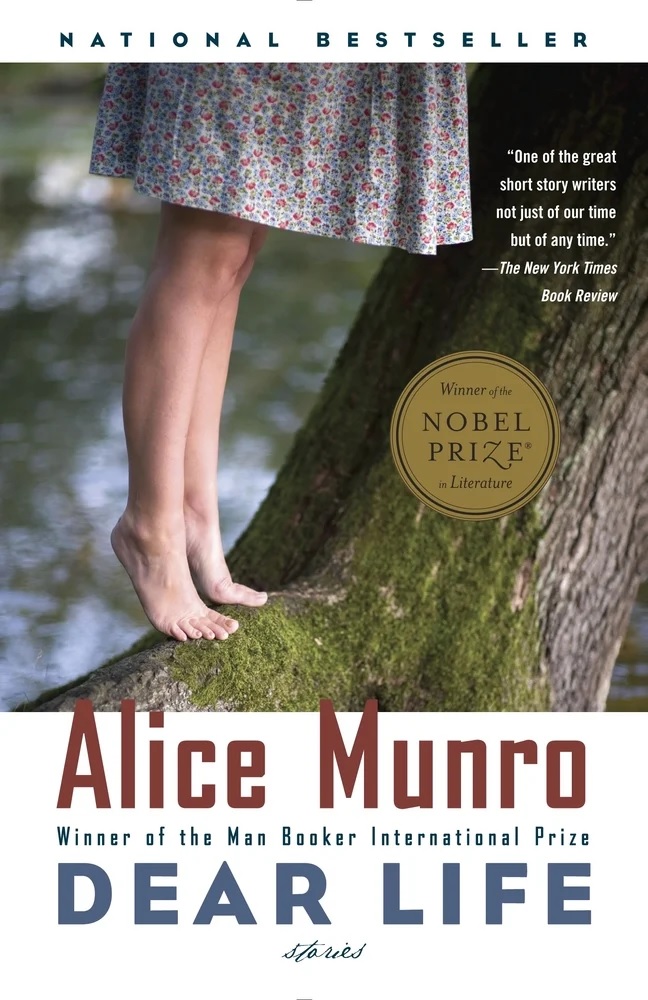 Alice Munro, the Nobel Prize-winning author beloved for her brilliant short stories, died on Monday at age 92. The New York Times called Munro "a member of the rare breed of writer, like Katherine Anne Porter and Raymond Carver, who made their reputations in the notoriously difficult literary arena of the short story, and did so with great success. Her tales--many of them focused on women at different stages of their lives coping with complex desires--were so eagerly received and gratefully read that she attracted a whole new generation of readers."
Alice Munro, the Nobel Prize-winning author beloved for her brilliant short stories, died on Monday at age 92. The New York Times called Munro "a member of the rare breed of writer, like Katherine Anne Porter and Raymond Carver, who made their reputations in the notoriously difficult literary arena of the short story, and did so with great success. Her tales--many of them focused on women at different stages of their lives coping with complex desires--were so eagerly received and gratefully read that she attracted a whole new generation of readers."
Munro won the Nobel Prize for Literature in 2013 and was cited as "master of the contemporary short story" who was able "to accommodate the entire epic complexity of the novel in just a few short pages." In 1986, she won the Governor General Literary Award for her first collection, Dance of the Happy Shades, and went on to win two more Governor General awards. She also won two Giller Prizes as well as the Man Booker International Prize, whose judges called her "practically perfect," adding that "she brings as much depth, wisdom and precision to every story as most novelists bring to a lifetime of novels. To read Alice Munro is to learn something every time that you never thought of before."
"Ms. Munro's stories were widely considered to be without equal, a mixture of ordinary people and extraordinary themes," the Times said. "She portrayed small-town folks, often in rural southwestern Ontario, facing situations that made the fantastic seem an everyday occurrence. Some of her characters were fleshed out so completely through generations and across continents that readers reached a level of intimacy with them that usually comes only with a full-length novel."
Munro was also a bookseller. She and her first husband, James Munro, opened Munro's Books in Victoria, B.C., in 1963. CBC quoted Munro as saying the store helped her overcome writer's block. "The writing ceased to be this all-important thing that I had to prove myself with. The pressure came off."
Kristin Cochrane, CEO of her longtime publisher, McClelland & Stewart, said, "Alice Munro is a national treasure--a writer of enormous depth, empathy, and humanity whose work is read, admired, and cherished by readers throughout Canada and around the world. Alice's writing inspired countless writers too, and her work leaves an indelible mark on our literary landscape."
Canadian Prime Minister Justin Trudeau wrote on X: "The world has lost one of its greatest storytellers. Alice Munro was captivated with everyday life in small-town Canada. Her many, many readers are, too. She will be dearly missed." Munro's final short story collection, Dear Life (2012), is available in paperback from Vintage.
| celebrate pride month with webtoon! |
|
Read what writers are saying about their upcoming titles
Every Time We Say Goodbyeby Natalie Jenner
Dear Reader, EVERY TIME WE SAY GOODBYE was the hardest book I will ever write, and the most rewarding. I packed everything I could into this book: love and conflict, faith and religion, censorship and resistance, art and moviemaking, fashion and food, cameos by favorite actresses and characters from my earlier books, and above all Rome, my favorite city in the world. I hope that my novel gives you the entertainment and inspiration that nourished me throughout its writing. Email trademarketing@stmartins.com with the subject line "Every Time Was Say Goodbye Sweeps" for a chance to win one of five copies. Gratefully yours, |
Pub Date: ISBN: List Price: |
Happily Ever Maybe
|
Pub Date: ISBN: List Price: |



